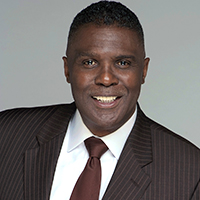
By Glenn Ellis
(Trice Edney Wire) – In the United States, about a million new cases are diagnosed each year, and some 800,000 operations are performed to treat gallstones, making gallstone disease the most common gastrointestinal disorder requiring hospitalization.
Some people think of their gallbladder as being “expendable”. Don’t get me wrong; I don’t think anybody wants any of their organs to be removed. But since many people live a seemingly normal life after getting their gallbladder removed, many people don’t think their gallbladder plays an important role in their overall health. After all, how important can your gallbladder be if you can do just fine after it’s surgically removed? The gallbladder actually plays a very important role in your body. Some people consider the Gallbladder as an “unimportant” organ. In reality, it is an essential part of the digestive system. Why we have a gall bladder at all is something of a mystery. Many animals such as horses, pigeons, and rats manage quite well without one.
One of the biggest digestive problems that can quickly turn a great meal, into a period of misery is gallstones or gallbladder disease.
The gallbladder is located near the liver. It stores bile, which aids in the digestion of fats. When a person eats, bile is released from the gallbladder to the intestine to aid in the breakdown of fats.
Gallstone disease is the most common disorder affecting the body’s biliary system, the network of organs and ducts that create, transport, store, and release bile. Bile is a thick fluid, made in the liver and stored in the gallbladder, which acts in the small intestine to digest fat. Bile contains cholesterol, water, proteins, bilirubin (a breakdown product from blood cells), bile salts (the chemicals necessary to digest fat), and small amounts of copper or other materials. If the chemical balance of bile contains too much of any of these components, particularly of cholesterol, crystals form and can harden into stones.
Bile is stored in the Gallbladder and is concentrated up to five times by the removal of water. This concentrated bile is essential for the complete digestion of fats. One big problem with gallbladder surgery is that the body has nowhere to store bile until it is needed. Therefore, it just drips continually. And when a large amount is needed to digest a meal with a lot of fat, there is not enough bile added to digest it properly.
Gallstones form when liquid stored in the gallbladder hardens into pieces of stone-like material. Bile contains water, cholesterol, bilirubin and other substances. Ideally these minerals remain in liquid form until they are passed out of the body. However, excessive amounts of these minerals in bile can cause them to crystallize.
These small crystals that precipitate out of the saturated bile may begin to clump together. Any existing crystal makes it easier for other crystals to form. If they stay in the gallbladder too long, the crystals gradually grow larger until they become a gallstone so large that it cannot pass through the biliary ducts.
In terms of size, gallstones can be as small as a grain of sand or as large as a golf ball. A person can form one large stone in his or her gallbladder, or hundreds! About 10 percent of the population has gallstones, but the vast majority experiences no symptoms and need no treatment. However, in 1 percent to 2 percent of these people, gallstones can cause problems by lodging in bile ducts, stopping the flow of bile or digestive enzymes, and leading to severe abdominal pain, vomiting, inflammation, and even life-threatening infection.
Gallstone attack has some classic symptoms:
The most agonizing pain is experienced in the upper right part of the abdomen under the ribs. Usually it appears suddenly, sometimes an hour or two after eating a fatty meal. The pain may get worse quickly, and then last for several hours. Many times the pain may radiate to the back between the shoulder blades or under the right shoulder. Inhaling deeply, or moving, often makes the pain worse. The primary therapy for gallstones that are causing pain, inflammation, or infection is removal of the gallbladder.
As I mentioned earlier, the main function of the gallbladder is to collect bile from the liver and contract periodically to force it into the intestine as needed. This means the gallbladder is constantly collecting the major ingredients for gallstones.
A number of factors put people at higher risk of gallstones:
Gender: The prevalence of gallstones is higher in women than in men. Women between the ages of 20 and 60 are three times more likely to develop gallstones than are men in the same age group. And by age 60, 20 percent of American women have gallstones.
Age: The incidence of gallstone disease increases with age.
Genetics: Family history and ethnicity are critical risk factors in development of gallstones, though no gene responsible for gallstone formation has yet been discovered. African-Americans seem to have lower rates of gallstone disease than American Indians, whites, or Hispanics.
Obesity: Obesity is a significant risk factor, particularly for women. Obesity also slows down the emptying of the gallbladder.
Location of body fat: Belly fat, that spare tire around the middle, dramatically increases the chance of developing stones.
Diabetes: People with diabetes often have high levels of triglycerides in their blood, and these fatty acids tend to increase the risk of gallstones.
Even if you’re not “at risk” for gallstones, it would be wise to maintain a good body weight, by among other things, sticking to a diet that is low in fat and cholesterol, and high in fiber.
Remember, I’m not a doctor. I just sound like one.
Take good care of yourself and live the best life possible!
The information included in this column is for educational purposes only. It is not intended nor implied to be a substitute for professional medical advice. The reader should always consult his or her healthcare provider to determine the appropriateness of the information for their own situation or if they have any questions regarding a medical condition or treatment plan. Glenn Ellis, is a Health Advocacy Communications Specialist. He is the author of Which Doctor?, and Information is the Best Medicine.















